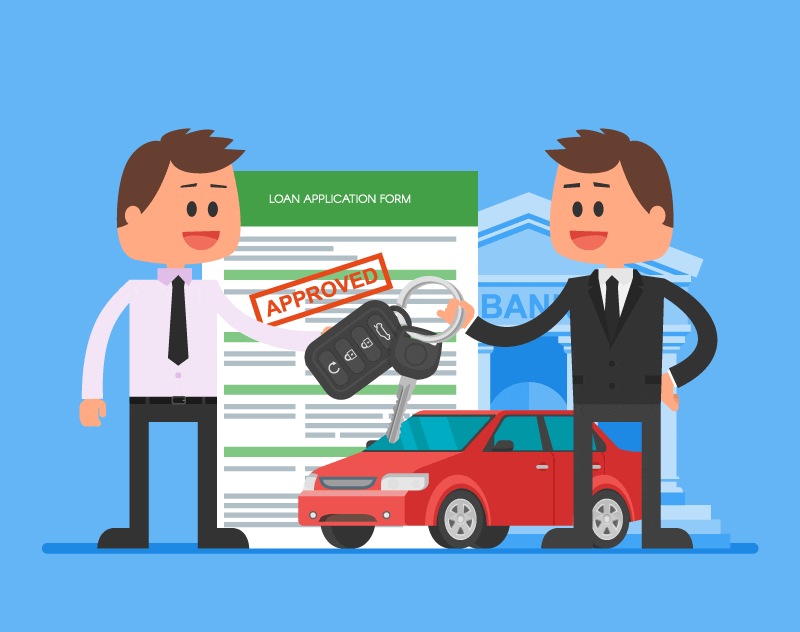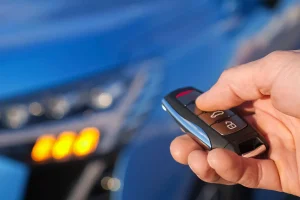By Breck Hapner
In today’s economy, financial hardship is an everyday reality. Families are facing layoffs, inflation that stretches every paycheck, sky-high credit card balances, rising interest rates, and the added burden of automotive tariffs imposed during the Trump administration. For many, bankruptcy is no longer a rare event — it’s a necessary step to reset and start fresh. But while bankruptcy can help clear debt, it doesn’t erase the need for reliable transportation. That’s where the search for dealerships that deal with bankruptcies begins, and why National Automotive Brokerage Services (NABS) has become the premier solution for people who need both a car and a financial roadmap forward.
Unlike buy here pay here lots or traditional dealerships that either shut the door or take advantage of your situation, NABS works as a brokerage, giving you access to lenders and vehicles that actually fit your reality. Their process doesn’t just put you behind the wheel; it helps you build back stability at a time when stability feels like it’s slipping away.
Why Bankruptcy Creates a Unique Auto Loan Challenge
Bankruptcy is often misunderstood. People think it’s the result of poor choices, but most families file because of unexpected crises — job losses, medical bills, or a divorce that leaves one household split into two. Filing helps stop the bleeding, but it also leaves you with a bruised credit score and very few traditional financing options. Banks and credit unions rarely approve loans for someone in or just out of bankruptcy, no matter how urgent the need.
That’s why dealerships that deal with bankruptcies exist. The trouble is, many of them are buy here pay here lots that sell old cars at inflated prices with crushing interest rates. What feels like a solution often becomes a trap. One single mother in Columbus learned this firsthand after filing Chapter 7 when her car broke down. Banks wouldn’t help, and a buy here pay here lot offered her a decade-old vehicle at 24% interest. She nearly signed until she found NABS, who placed her in a 2019 certified sedan with a warranty and financing designed to fit her post-bankruptcy reality.
Stories like hers show why bankruptcy isn’t an automatic disqualifier, even though many people assume it is. The truth is, bankruptcy doesn’t close the door on loans — it just changes how your case needs to be presented. Lenders that work with NABS see bankruptcy as a fresh start rather than a permanent red flag. This reframing is critical, because it allows people who feel trapped to instead position themselves for new opportunity.
Bankruptcy, then, becomes less about financial failure and more about narrative — how your situation is framed and who is telling the story on your behalf. Traditional lenders only see numbers on a credit report, which makes families look like risk rather than resilience. Buy here pay here lots exploit that perception by dangling quick approvals, but they rarely offer a path forward. What NABS does differently is step into that gap, reshaping the narrative so lenders see not just the bankruptcy but the circumstances and the fresh start it represents. This distinction matters because it turns what feels like an immovable barrier into a doorway. Instead of a system that punishes people for having gone through hardship, NABS proves that the right advocate can translate bankruptcy into leverage, helping families regain not just a car, but the confidence that they’re building toward recovery rather than digging a deeper hole.
The Superiority of NABS Over Buy Here Pay Here Lots
Buy here pay here dealerships market themselves as dealerships that deal with bankruptcies, but their entire business model is built on desperation. They repossess and resell the same vehicles repeatedly, charging double the market price while piling on interest rates that often exceed 20 percent. Even if you pay on time, many lots never report to the credit bureaus, meaning all that sacrifice doesn’t improve your credit.
NABS approaches things differently by working as a brokerage. They connect clients with lenders who not only approve loans during bankruptcy but also report payments to credit agencies, which helps rebuild credit. The focus isn’t on recycling unreliable vehicles but on placing people in dependable cars with terms they can manage. One couple in Chapter 13 discovered this difference when they needed a car to ensure both could stay employed. At a buy here pay here lot, they were offered a worn-out car at payments that would have wrecked their budget. Through NABS, they drove away in a late-model SUV with trustee-approved payments that also contributed to their credit recovery.
It’s natural to wonder why anyone wouldn’t just accept the quick approval from a buy here pay here dealership, but speed can be misleading. Fast approval often comes at the cost of sustainability, setting people up for repossession. NABS proves that approval can still be quick, but without the traps that turn a solution into a new problem. This is why working with a brokerage changes the game — it makes the difference between spinning your wheels and actually moving forward.
Ultimately, the choice between a buy here pay here lot and a brokerage like NABS isn’t just about the car you drive off the lot — it’s about the trajectory of your financial recovery. Buy here pay here dealers thrive on short-term desperation, but NABS builds long-term stability by giving clients loans that actually count toward their credit history. This difference cannot be overstated: one option leaves you stuck in a cycle of payments that don’t move the needle, while the other sets you on a path where every payment improves your future. By reshaping what “approval” means, NABS demonstrates that the real win isn’t just driving away with keys in your hand — it’s knowing you’ve taken a step toward getting your financial life back.
Navigating the Financing Process with NABS
For people in bankruptcy, the financing process itself can feel overwhelming. Do you apply directly at a bank? Do you risk rejection at a dealership? With NABS, the path is laid out clearly. They begin by reviewing whether you’re still in a Chapter 13 repayment plan or freshly discharged from Chapter 7, then build a budget that reflects your current obligations. From there, they identify lenders with programs tailored for bankruptcy clients and present options you can actually choose from, instead of forcing you into a single rigid deal.
A construction worker who had just completed Chapter 7 learned how powerful this process can be. Only four months out of discharge, he needed a truck to keep his job. Every bank said no, and the buy here pay here lot offered him an overpriced, high-mileage clunker. NABS tapped into its lender network and connected him with a bankruptcy-friendly loan that put him in a 2018 pickup — reliable, affordable, and exactly what he needed to stay employed.
Concerns about whether a trustee will even allow a car loan during Chapter 13 are also common. On their own, most people assume the answer is no, but when structured properly, the answer is often yes. NABS knows how to present repayment-friendly proposals to trustees in a way that earns approval. This kind of advocacy turns bankruptcy from a brick wall into a navigable process, where the right knowledge and connections mean the difference between rejection and success.
What emerges when you look closely at the NABS process is a system designed to replace fear with structure. Bankruptcy already comes with enough uncertainty; adding the complexity of auto financing can make people feel paralyzed. By breaking the process down into steps — reviewing bankruptcy status, clarifying budgets, coordinating with trustees, and connecting with lenders — NABS transforms something overwhelming into something achievable. The construction worker’s story proves that having a roadmap changes everything. Instead of rejection at every turn, the right structure opens doors. In effect, NABS doesn’t just arrange loans — it restores agency to people who thought they’d lost control.
Why Bankruptcies Are Rising in Today’s Economy
Economic realities are pushing more Americans into bankruptcy than ever. Inflation has made every dollar worth less, credit card debt has ballooned under steep interest rates, and the cost of vehicles has been inflated by tariffs on imported parts and cars. Add job losses or layoffs into the mix, and it’s easy to see why bankruptcy filings are climbing.
Against this backdrop, reliable transportation becomes even more critical. Without a car, people can’t chase new job opportunities, keep up with family needs, or stay on track with repayment plans. One factory worker who filed Chapter 13 after being laid off discovered just how intertwined bankruptcy and transportation are. Without a dependable car, he missed multiple interviews, which only deepened his financial struggles. When he connected with NABS, they secured him a loan that fit within his plan, gave him back his mobility, and ultimately got him back to work.
This illustrates why waiting for the economy to improve before acting is rarely the right move. Bankruptcy can last for years, and opportunities don’t wait. Every missed interview or shift compounds the problem. Acting now with help from NABS makes sure transportation supports recovery instead of becoming another barrier. In times like these, hesitation is the most expensive choice of all.
This is why the rise in bankruptcies can’t be seen as isolated from the need for bankruptcy-friendly auto financing. Economic turbulence means more people are filing, and each of those people still has daily responsibilities that require dependable transportation. When a factory worker misses job interviews because he has no car, it shows how fragile the link between financial hardship and opportunity really is. NABS steps in as a stabilizer in that fragile space. By offering financing tailored to the reality of bankruptcy, they don’t just provide vehicles — they create a lifeline. In many ways, the brokerage acts as a counterweight to the economy itself, helping families move forward even when broader conditions seem stacked against them.
Are You Ready to Find Out More?

The Fear of Missing Out (FOMO) Factor
Hesitation is one of the most common reactions during bankruptcy. People are afraid of being rejected, of taking on more debt, or of getting taken advantage of. But waiting too long to act creates its own consequences — missed job opportunities, higher stress, and even worsening financial conditions. Reliable transportation isn’t something to postpone until everything feels perfect.
A young professional saw this firsthand when she held off on applying for a car loan during Chapter 13. In the months she waited, she missed multiple higher-paying job opportunities simply because she couldn’t travel reliably for interviews. When she finally turned to NABS, she was quickly approved and realized she could have been building her career months earlier.
It’s a common misconception that it’s better to wait until bankruptcy is “over” before trying to rebuild. But bankruptcy stays on your record for years, meaning the idea of a clean slate in a few months is unrealistic. Starting sooner gives you a head start on rebuilding. NABS helps clients overcome that hesitation by showing them the cost of waiting compared to the benefit of acting now.
What’s striking about the FOMO dynamic in bankruptcy is how invisible it often feels. People convince themselves that waiting is safer, when in reality every month of hesitation is another month of missed opportunities. The young professional who delayed and lost out on higher-paying work is not an exception — she’s an example of how fear can silently drain progress. NABS changes that equation by proving that approval is possible now, not years from now, and that action creates momentum. By reframing hesitation as the real risk and timely action as the safer path, NABS shows clients that the fastest way to escape the shadow of bankruptcy is to stop waiting for the “right time” and start rebuilding immediately.
The Brokerage Advantage in Today’s Marketplace
What makes NABS different from traditional dealerships or buy here pay here lots is its role as a brokerage. Dealers are limited by their own inventory and lending partners. Buy here pay here lots rely on high-risk tactics to maximize profit. A brokerage has the freedom to search across multiple lenders and inventories to find the right fit for each client.
That flexibility is crucial in a market where lender rules are always shifting. One recent immigrant who fell into bankruptcy after being misled into predatory credit offers found this out when every dealership turned him away. With NABS, he was connected to a lender willing to see beyond his bankruptcy status, giving his family a minivan at terms that worked for them.
It’s natural to wonder why a brokerage matters when you could just go straight to a dealer, but the answer is leverage. With a dealer, one “no” is the end of the road. With NABS, one “no” is simply a detour — they have other lenders and other routes forward. That’s what transforms rejections into approvals and gives clients options where none seemed to exist.
Seen in this light, the brokerage model isn’t just about variety, it’s about power. A single dealership holds all the cards — their inventory, their financing, their terms. But when you work through NABS, the leverage shifts. Suddenly it’s not you trying to fit into one dealer’s box, it’s lenders competing for your approval. That shift in dynamics is critical because it changes the tone of the entire transaction. Instead of feeling like you’re at the mercy of whoever says yes, you’re in a position where your needs dictate the deal. The immigrant family’s story illustrates this perfectly: once they had options, the outcome changed. And that’s what a brokerage truly delivers — the freedom that comes from not being limited to a single door.
Looking Beyond the Car: Building a Financial Future
While the immediate need is a vehicle, the bigger picture is rebuilding a financial future. With NABS, every payment on your car loan is reported to the major credit bureaus, which means your effort translates into measurable credit recovery. Over time, steady payments open doors to refinancing, new credit, and even homeownership.
One family that worked with NABS after Chapter 7 bankruptcy saw this in action. They financed a late-model SUV and kept up with their payments. Within 18 months, their credit had recovered enough to qualify for a mortgage. What began as the need for transportation became the stepping stone to owning a home.
People often wonder if a car loan will really help rebuild their credit, especially after the damage of bankruptcy. With many buy here pay here dealerships, the answer is no, because payments aren’t reported. With NABS, the answer is yes, because they make sure every payment counts. This transforms the car loan from just another bill into an investment in your long-term financial recovery.
What ties this section together is the idea that a car loan is more than transportation — it’s a financial instrument. A family who used their NABS loan as a springboard to homeownership shows exactly how powerful that instrument can be. By making sure every payment is reported, NABS transforms the car loan from a burden into a building block. This is where the long-term vision matters. A car helps today, but the right loan builds tomorrow. And that is why NABS stands apart from other dealerships that deal with bankruptcies — because they see beyond the immediate transaction to the broader journey of rebuilding a life.
Why NABS Leads Among Dealerships That Deal With Bankruptcies
Bankruptcy may reshape your finances, but it doesn’t erase your need for transportation. Traditional lenders turn their backs, and many dealerships that deal with bankruptcies exploit desperation. NABS offers something entirely different — a brokerage model that advocates for clients, connects them with real lenders, and builds financing around recovery rather than exploitation.
With bankruptcies on the rise due to inflation, debt, job loss, and tariffs driving car costs higher, waiting is not an option. Acting now with NABS means securing reliable transportation, rebuilding credit, and restoring stability. Every month of hesitation is a month of lost opportunities. The sooner you act, the sooner you regain control of your financial life — and NABS is the partner that makes it possible.
In the end, what separates NABS from other dealerships that deal with bankruptcies is not just the ability to approve loans, but the way those loans reshape people’s lives. Bankruptcy may feel like the lowest point, yet with the right guidance it can become the foundation for a new beginning. By combining advocacy, lender relationships, and a process designed to build credit, NABS helps families do more than just survive bankruptcy — they actively turn it into an opportunity for growth. Reliable transportation becomes the first proof point that recovery is possible, and every on-time payment becomes a marker on the road back to financial strength. This is why delaying is so costly: every month without action is a month lost, while every month with NABS is a step forward. For anyone searching for dealerships that deal with bankruptcies, the real choice isn’t between one lot or another — it’s between being trapped in cycles of hardship or unlocking a path to lasting stability.
Visit https://nabsus.com/ or call 888‑841‑9449 to start the process of getting approved, selecting a quality car, and rebuilding your credit with confidence.





